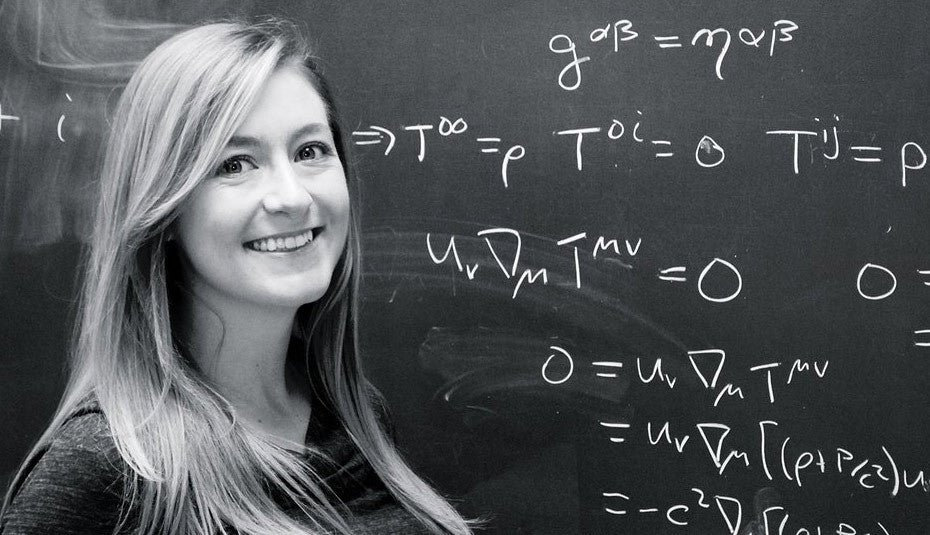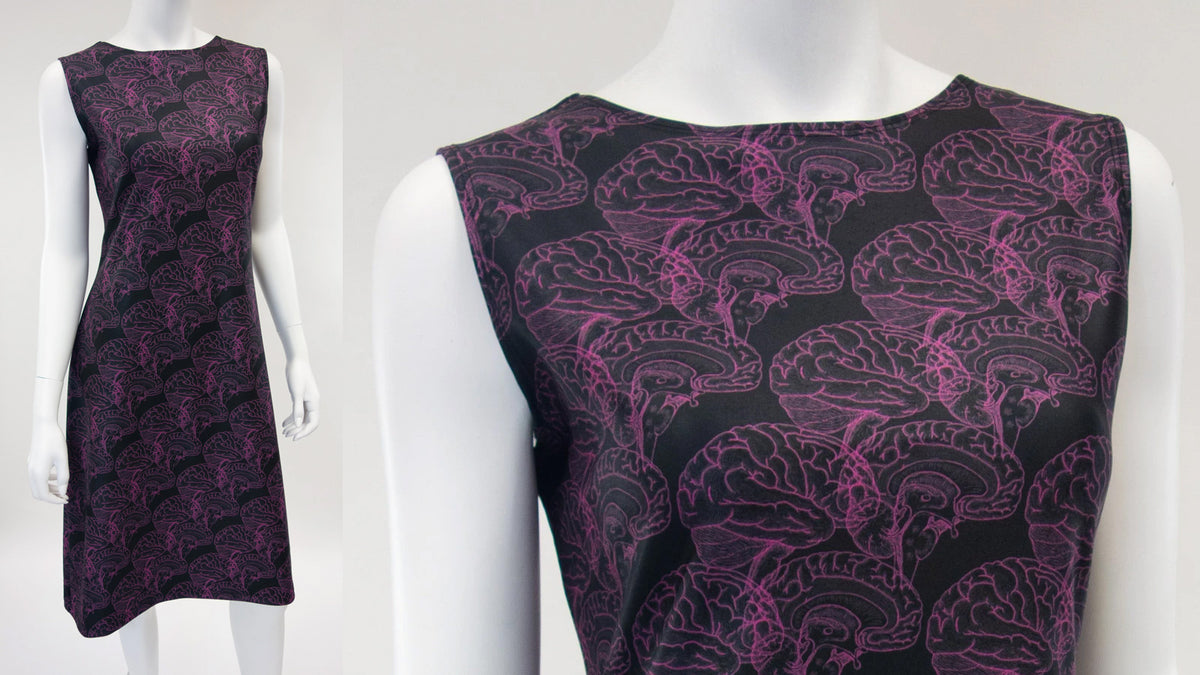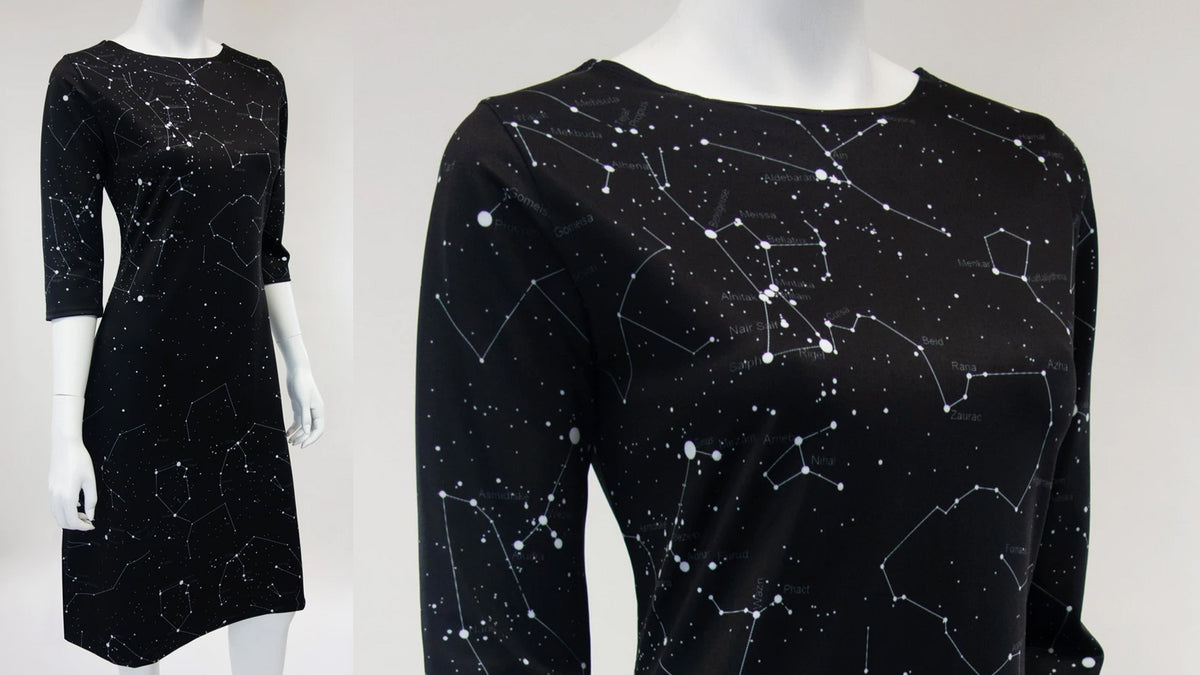
Sydney Chamberlin on Why the Gravitational Waves Discovery is So Important
"The #1 reason why I love designing these dresses is that I get to be in contact with so many interesting people. When I first posted the Gravitational Waves Dress, I received great responses from women in Physics and it was very exciting! One of them was Sydney Chamberlin, PhD from the Institute for Gravitation & the Cosmos at Penn State who exclaimed: "Please consider me your personal gravitational-wave consultant!" I took her offer and below she explains the importance of the discovery. Horray for #WomeninScience!"
Einstein's Theory Confirmed
In terms of the takeaway [of the discovery of Gravitational Waves], there are two parts: The first reason that this is significant is that it validates our current understanding of gravity. Albert Einstein predicted the existence of gravitational waves about a hundred years ago, after he completely revolutionized the way we think about gravity. And so far, his theory — general relativity — has passed all the tests we’ve been able to hand it with flying colors.
This is an important thing to do in science, to test what we think we know, because we never *really* know. Our best theories are really at most approximations to nature (they are really good approximations, of course!).
Someday, someone might come along and replace Einstein’s theory with a better one… and actually there are lots of theories that already exist that agree with general relativity on all its predictions except for gravitational waves. So this observation is the only way we can actually compare those theories against his, and another step in verifying that we are right about how gravity works.

A different way to 'see' the Universe
The second reason is perhaps more exciting. Everything we know about the universe right now — that other galaxies exist, what stars are made of, the Big Bang, that the universe is expanding, what we are made of, ... — all of that was discovered using light (x-rays, radio waves, infrared, ultraviolet, visible… all types of light!). So virtually everything we know comes from one kind of observation, that made with light. This is totally different. Instead of using light, we are using gravity. And gravity behaves differently than light, so we’ll be able to learn all kinds of things. The cliche sort of phrase we often use is that we’re “opening a new observational window on the universe”. But it’s true!
We can now better study things like black holes, which don’t emit light and thus can’t be looked at directly with any other type of telescope. We might also be able to learn about the contents of the universe….only about 4% of the universe is composed of ordinary matter like atoms. The rest is something we call “Dark Matter” and “Dark Energy” which only interact with other matter via gravity (they don’t interact with light, so we can’t use light to study them). We call them dark because we have no clue what they are… maybe gravitational-wave astronomy will help us to understand those. And then there are probably objects in the universe that we never even dreamed of and haven’t yet seen that we could discover.
"It is as if we had to learn everything about the universe from silent films, and now someone has turned on the sound and now we can hear :)"
Written by
Sydney J. Chamberlin, Postdoctoral Researcher
Institute for Gravitation & the Cosmos
Department of Physics, Pennsylvania State University
Wear the Fabric of Space Time
Want to celebrate this amazing discovery? The Gravitational Waves Dress is now available from the store in the Women in STEM Collection. The plaid pattern was inspired by the wave forms that confirmed the discovery at LIGO.
Gravitational Waves Dress
Model: Sasha Berleman
Photo: Kelly Hsiao
Also in News and updates

PhD Defense Attire: New Brain Anatomy Dress
A new design is available for all you brainy fashionistas out there.

Constellation Dress for Astronomy Lovers
We've updated the design of the STEM Classic Constellation Dress!



